by Peter Lenihan
Fort Apache is a turning point. Since the thirties John Ford had made only two westerns—Stagecoach (1939) and My Darling Clementine (1946). Between 1948 and 1950, however, he would direct five—Fort Apache (1948), 3 Godfathers (1948), She Wore a Yellow Ribbon (1949), Wagon Master (1950) and Rio Grande (1950). This, in itself, is not necessarily important. Great directors excel in many genres, and following Rio Grande, Ford wouldn’t make another oater for six years. However, the differences between these five films and the two that came before it are striking, and worth emphasizing.
Film historians have gone to great lengths to underline the importance of Stagecoach, and particularly its place in the canon as the first “mature” “western”—a distinction I approach with great trepidation, and which you probably should too. If we are to understand maturity as consisting of busy, overlapping subplots and more characters than writer, producer or director know what do with, then I agree. The film as a whole, however, is too overstuffed to accommodate Ford’s poeticism, and both the film’s merits and failings seem to have more to do with its script than direction or (admittedly often startling) cinematography. My Darling Clementine, alternatively, is essentially a sequence-for-sequence remake of the superb Frontier Marshal (1939), and that it is not recognized as such probably has more to do with the obscurity of Dwan’s film than anything else. While Ford’s sense of community in Clementine is undeniably deeper than in Stagecoach, there’s an often transparent directorial discomfort with the pulpy gunfighter plot he’s supposed to be telling, and the film only comes alive in the scenes that have nothing to do with the Clantons or the OK Corral.
Fort Apache is a bit different, and marks, as Dave Kehr put it, the film in which “Ford finally withdrew from the Oscar race and entered his own individual aesthetic, isolating himself in the glories and eccentricities of a great artist.” Those are lofty pronouncements, but strike me as being justified by the film (as well as Wagon Master, The Sun Shines Bright, The Man Who Shot Liberty Valance and countless others). It’s a film of strange, unexplained suggestions—the dispute between Collingsworth and Thursday, for example, is never fully explained, although it almost certainly has to do with sides taken during the American Civil War—and although some of this is overridden by a stunning and bombastic climax, these uncanny whispers remain.
The plot is not, in itself, terribly complicated—a new commander, Owen Thursday (Henry Fonda), assumes command at the fort, and his attempt to confront an Apache party has disastrous results. Thursday is often compared to Custer, and the parallels are certainly there, although whether Ford and Fonda’s rendition is any closer to reality than Walsh’s and Flynn’s absurd characterization I will leave to historians. Less debatable, I think, is that it’s two films, thrown violently together by the Apache leader Cochise. The first movie details Thursday’s problematic relationship with the fort and his daughter; the second is an observational, almost documentarian treatment of drunken caricatures and larger-than-life bullshitters wearing cavalry uniforms and breaking in new recruits. The first, less interesting film is very easy to describe; the second, far more poetic one, is nearly impossible to.
Part of what makes writing on a McCarey, Cukor or Ford scene so difficult is that its greatness often relies on what remains most invisible. This is not something that can be said of a Hitchcock set-piece or a Bresson sequence, where mechanics and dramatic purpose are often inseparable from each other, and fairly transparent. But quantifying or qualifying a glance or the raising of an arm is far more difficult, and I’m not sure the critical language has yet to emerge that can capture human movement as vividly as camera movement. Little can be said, for example, about the officer’s ball line dance that actually captures its essence, and to say it’s the somber play-acting of another day drunks preluding their own march to death gets at everything but what is on-screen itself.
Perhaps it’s best to say that it’s always easier to talk about the literary strains in Ford’s work than the poetic. In some sense, we like to discuss the ways in which Fort Apache explores the relationship between myth and national history because it’s so hard to get at what’s really there, the moments that make the movie but which remain, for whatever reason, a bit beyond. As in almost all the best Fords, there are running dogs and dances, and a beautiful song, this time by a drunk on his way back to jail. And before the plot has to take over, that’s enough.


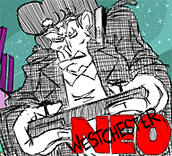


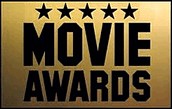
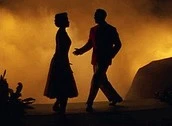
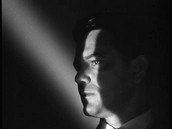

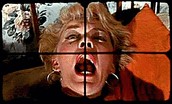

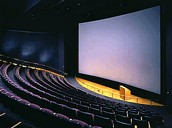








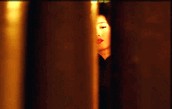

 Click on names for archives
Writers/Founders
Click on names for archives
Writers/Founders
Great review! What I always found strange about this film is that as a tribute to the cavalry there are no Indian casualties, while the losses to the men are considerable. I know some Ford dissenters will bemoan the sentimentality and romance, but these aspects are all part of the fun. I think I might prefer ‘She Wore A Yellow Ribbon’ but I do like this film well enough.
I’ve never quite understood the concept of anti-sentimentality regarding cinema. Sentiment is a feeling….much like any other feeling, except that it has a regard for something in the past. I don’t know why this would ever be considered as some sort of inferior emotion. That’s like saying I’m against any film that relies on happiness, or sadness or anger for effect. You can’t just pick and choose what emotions to count or discount regarding art. You can choose to not particularly like it personally, but it’s use doesn’t make something inferior by definition. Now anything can be overdone, but simply saying something is sentimental and calling it rubbish is just narrowminded. I know you’re not saying the film is sentimental….it just brought to mind a complaint I have with people disparaging Ford’s films on that basis.
Agreed Jon. It never held any sway with me either.
Very well written piece here Peter, taking a look at Ford’s career and I know you are very well versed in his work. What you say makes a lot of sense and Fort Apache certainly marked a turning point for his work, even though it’s my least favorite of the Cavalry Trilogy. I like what you say about trying to describe a scene in a Ford film….for instance that scene in She Wore a Yellow Ribbon when Victor McLagen goes into the bar and gets into a fight….there are so many layers going on there with gamesmanship and teasing and sarcasm as Wayne set him up for it in the beginning. The actual mechanics of it are almost in complete opposition to the intentions and psychology of the characters in those moments.
As expected Peter, a superlative essay of Fordian scholarship that not only examines the film’s artistic ‘merits and failings’ but candidly declares a turning point in the master director’s filmography. I would suppose I might like this film a bit more (Archie Stout’s stunning black and white cinematography is breathtaking, for one, and New York Times’ film critic Frank S. Nugent’s accomplished screenplay reminds us that evil is often negotiated by noble and upstanding men) but you certainly give the film it’s due with that terrific Dave Kehr assessment. Excellent point too Peter when you note that much of Ford’s greatness is “invisible.”
I see Kael was mixed on it as she opines: “This is one of Ford’s beautiful but irritating westerns. The fights and dances and other big scenes are triumphs of staging, but the coy love interest and the Irish horseplay are infantile. And the whole picture is bathed in a special form of patriotic sentimentality: scenes are held so that we cannot fail to appreciate the beauty of the American past.”
Ah Pauline.
Again the topic of sentimentality as a negative….don’t really understand that. Same issue that people have with Steven Spielberg’s works. I’ve never understood why sentimentality is a negative in and of itself.
You can’t expect greater photography than what Archie Stout did for Ford in this film. Winton Hoch was another who did yeoman work for the director.
Jon raises an interesting subject. Sentimentality as a pejorative is pretty well entrenched in art criticism, and in this sense refers to shallowness, of a tendency to take shortcuts in establishing empathy or eliciting emotion. Yet, equally, particularly in film criticism, quite often it amounts to no more than a shallow dismissal of emotions and feeling as somehow intruding on the artistic value of a work. Indeed, it is often – and arrogantly – used to dismiss popular emotions as inferior. Interesting here is that Peter does not mention Ford’s The Fugitive, to my mind a Western, made in 1947 and the only film where Ford had total control, having been produced by his own production company. Ford is on record as describing it as his favorite film. The film bombed on its release and the critical response has been negative with a chorus describing it as overly sentimental. I don’t agree, but that is by the bye. Interesting also is a mirror tendency by the cognoscenti not to question extreme violence and perverse sexual tendencies as valid exposition. To me what matters is sincerity, something that is in pretty short supply these days. There should also be respect for genuine emotion. Who am I to question the validity or worth of another’s feelings in response to a movie.
I like The Fugitive, but its set in contemporary (1947) South America and hardly a western. I would say its neglect has more to do with the difficulty in seeing it than anything else, although I would say that many critics have a palpable discomfort when it comes to engaging with religion in American film (as opposed to European or Japanese cinema, where it’s usually embraced).
Thematically there are sufficient genre elements to support the Western argument. The movie is available as a Warner Archive DVD release.
On religion ‘Lloydville’ on his blog mardecortesbaja.com made these observations in a recent post on The Fugitive.
“All of Ford’s films are religious, though rarely overtly so, because he was essentially a religious artist — service, sacrifice, forgiveness and redemption were his perennial themes. But he was wise enough to disguise these themes… Overtly religious themes make people nervous… [The Fugitive] was a total flop commercially, and doesn’t hold a high place in the critical canon of Ford’s work. It was perhaps a self-fulfilling prophecy — Ford saying, “If I tell you what my films are really about, you’ll hate them.” Point taken. If you want to love Ford’s work while ignoring its religious content, you don’t really love Ford’s work at its thematic core.”
Lloydville’s post is here: http://www.mardecortesbaja.com/2013/10/08/the-fugitive-1947/
Ah yes, well said……
“Interesting also is a mirror tendency by the cognoscenti not to question extreme violence and perverse sexual tendencies as valid exposition.”
I would agree and often these elements remain unquestioned for one thing, and for another are often used as graphic depictions of emotion that are somehow validated. The question is whether it’s used sincerely like you said. Either a movie is sincere or it’s not. Whatever emotion is therein should be given its respect.
I am inclined to agree with Mr. D’Ambra and “Jon”.. Everyone takes something different to a viewing. Both my parents are Irish and one of my grandparents was actually born outside of Dublin. I get the sentiment, and understand there is a personal element at play. Some of this was seen in Fort Apache, a western I’ve always admired. I like it best of the trilogy. I think that people will always play the sentiment card when they are looking to take something or someone down. I very much enjoyed Peter Lenihan’s marvelous review, which seems to set aside such complaints.
This is a very great film. Fonda’s last moments, a handful of men in a declivity, simply swallowed up by a rush of Apaches, is one of the most perfectly staged and shots moments in film.
Well, I’ve always loved this film and although I do agree with the authors views on the good and the bad of it there is one single thing about it that makes me overlook some of the movies shortcomings…
For me, the film steps over the line into masterpiece territory because of the superlatively controlling performance of Henry Fonda. Not one to generally obsessive and controlling people, he finds all the perfect notes that quickly identify the character as an hysterically driven control freak. We often talk about the greatness John Wayne achieved as Ford’s “main man” yet we forget that in no less than four great movies, Ford honed in on Fonda during his greatest period as a superlative character actor. The difference here is that Ford recognizes the darker side of Fonda that was rarely used. This, of course, is part of an exciting repertoire for Ford’s work and amongst all the great performances he ever got out of his actors there is almost no question that Fonda delivered the most three dimensional, nuanced and brilliantly studied performances of them all.
Along with this turn you have to remember his tender but forceful transformation into YOUNG MR. LINCOLN, his definitive Wyatt Earp in MY DARLING CLEMENTINE (absolutely my favorite Fonda performance and Ford film) and, inarguably the best performance Ford ever received by an actor, his delicate and determined Tom Joad in the monumental THE GRAPES OF WRATH.
There’s a lot to applaud and moan over about FORT APACHE, but Fonda stands tall in the best and worst of it. A truly great performance by one of the best actors of the era…
I think Fort Apache shows Ford trying to wrestle with both his admiration for military valor and (keep in mind this is only a few years after WWII) and the skeletons that he knew America had in her closet. The movie doesn’t resolve this tension, but that’s part of what makes it interesting. The final scene can be read as a patriotic ode, an ironic “born in the USA” moment, or a mix of both.
Its biggest weakness is of course the Shirley Temple plotline, but it gets enough right that I can forgive that.